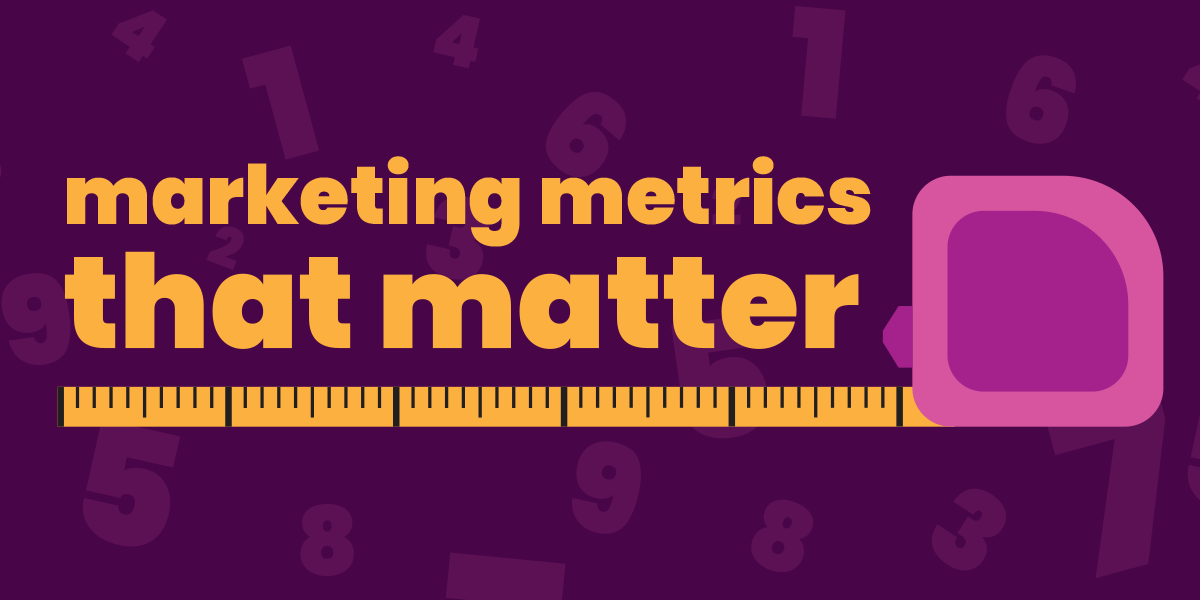Your guide to the marketing metrics that matter

Few things matter more for your marketing planning than key performance indicators. After all, how else are you supposed to know if your efforts are working? But just 23% of marketers are confident they’re tracking the right KPIs. It’s safe to say there’s a lot of confusion on this topic.
We’ve gone over how to spot which KPIs might actually be vanity metrics. Now that you’ve learned that you may be wondering: what marketing metrics can I count on? Every campaign is different, and unfortunately there is no one list of the only metrics that matter for everyone. Luckily, we’ve come up with a tried-and-true method to keep track of the best KPIs: people reached, conversations started, and conversions achieved. Here’s how – and why – it works.

Why these marketing metrics matter
The key to finding the metrics that matter all comes back to the concept at the core of all good marketing: the sales funnel. While the bottom of the funnel might be the most exciting – after all, those are the people who are actually giving you their money – if you focus only on that small slice of the funnel, you’ll quickly run out of customers. By keeping track of these three metrics, you’ll have a holistic view of the entire funnel. This ensures that you not only have an eye on people who are ready to buy now, but people who will be ready to buy in the future if you nurture them correctly.
Now that you know the basis for these metrics, let’s dive in:
Main marketing metric #1: People reached
People reached corresponds to the awareness portion of the sales funnel – the potential customers who fill up the top section. While it may be tempting to focus solely on the bottom of the funnel – in other words, the people who fork over their money – if you do this for too long, you’ll end up with diminishing returns. It’s marketing 101 that people first need to know your brand, then like it, and then trust it enough to make a purchase – so make sure you’ve got a steady stream of people who know you, so they can eventually like and trust you. Bottom line, if your reach is rising week to week, you’re on the right track.

The best KPIs to track people reached:
- Reach or unique reach
- Impressions + frequency
- Viewable impressions + frequency
Main marketing metric #1: Conversations started
Conversations started measures people who are actively considering your brand. They’ve already become aware of you – now they’re engaging further in one way or another. If you’re making sure to keep the funnel full at the awareness stage, you should eventually see a corresponding rise in the conversation stage – if you’re doing it right!
The key here is to not let these conversations hang in the air unfinished. If someone is engaging with your content on Facebook, for example, make sure to respond – even and especially if the comment is negative! Negative comments give you an opportunity to show your audience how you handle negative feedback and can actually end up winning more people over. But even if the conversation isn’t public – say, someone filled out a form – make sure to respond quickly. That will build trust, which is key to turning an audience member into a customer.

The best KPIs to track conversations started:
- Comments
- Form fills
- Appointments
- Cost per conversion (spend on ad that converted divided by conversations started)
Note: though they are technically a measure of engagement, likes do not count as conversations started. Likes are a one-way street and tend to be an example of a vanity metric.
Main marketing metric #3: Conversions achieved
Conversion is, of course, the holy grail of an advertising campaign. No doubt you don’t need the reminder, but conversion is when someone knows and likes your brand enough to trust you and take a desired action. This can either be a sale, or something concrete on the way to making a sale, such as filling out a form.
So why not just track conversions, if that’s where the real action takes place? We’ve discussed this issue in depth before, but essentially, if you just look at the end of the process, you’ll miss all the important information about the steps people took to get there.

The best KPIs to track conversions achieved:
- Conversions (this will differ based on the type of campaign you’re running)
- Bind rate (Conversions divided by conversations started, multiplied by 100 to get a percentage)
Conversions can be whatever is important to your business. A form fill, an email address, moving someone from MQL to SQL, and so on. Conversions are often unique to you.

What to do with these marketing metrics
So now that you know which metrics to track, what do you do with them? In a word: optimize, optimize, optimize! If you’re getting a flood of traffic but people are bouncing quickly from your landing page (you have landing pages, right?) that’s a disconnect from the ad to the landing page. If you’re not generating traffic or getting clicks at all, that’s a messaging or audience problem – and so on.
If you’re getting the right traffic (low bounce, good time on page), but you aren’t seeing conversations or conversions, that’s probably an issue with the offer or trade you’re trying to make. And thanks to these metrics, you’ll no longer need to guess about what’s working and what’s not.


